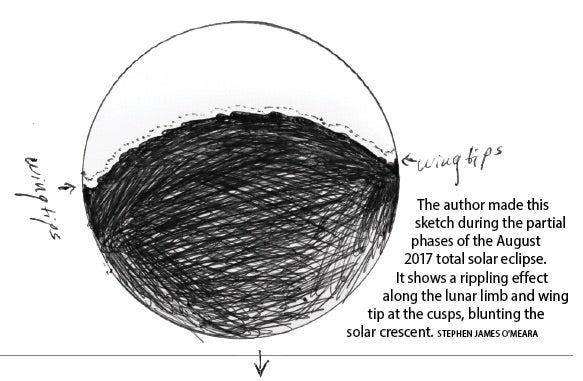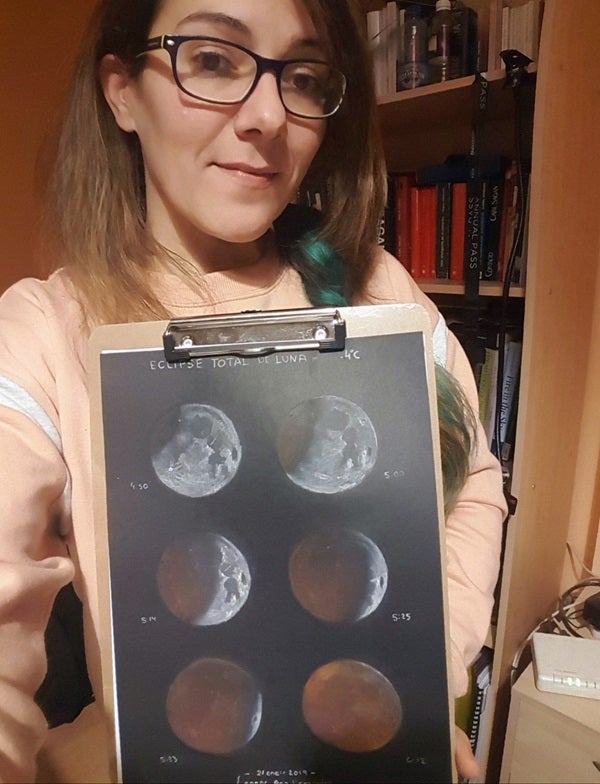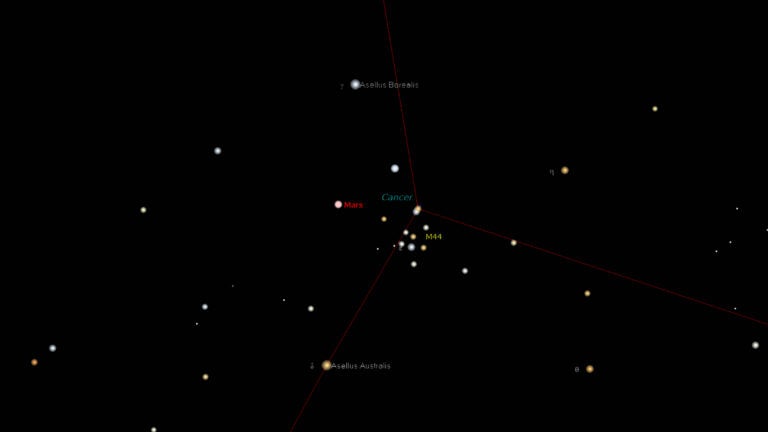A ripple effect
Occasionally, during the partial phases of the August 2017 total solar eclipse, the Moon’s following limb (edge) not only rippled like waves but also sported mysterious wing tips at its north and south extremities. This effect was in turn mirrored by a bright collar of light that ran along the outer edge of the lunar limb. The latter phenomenon is a well-known brightness-contrast illusion. If you stare at a black object (the New Moon) long enough against a bright background (the Sun’s disk), a portion of the eye’s retina will become fatigued, creating a negative (bright) afterimage that involuntary eye movements carry beyond the borders of the black crescent. Early telescopic observers mistakenly believed this bright collar was due to the refraction of sunlight through a lunar atmosphere.
The Moon’s rippling outer edge was an auxiliary phenomenon. Under excellent seeing conditions, the Moon’s limb appears irregular under magnification because of all the peaks and valleys along the limb that we see in profile. But heat shimmer magnified and warped these features and set them in motion — an effect similar to that seen along an ocean horizon or a hot road under mirage conditions. What I didn’t expect to see was the contrast illusion rippling in sync with the mock irregularities along the dark lunar crescent.
I would be most interested to hear if any of the black “wave crests” along the undulating limb appear to “rip free” and vanish, like what happens with terrestrial mirages. Watching the partial phases as the eclipse nears the horizon may just do the trick.
The wing tips at the cusps were an unexpected phenomenon. I’m guessing they, too, were a mirage effect, coupled with the black drop effect. Usually associated with transits of Venus, the black drop occurs at second and third contacts, when the black disk of Venus may appear to elongate toward the inner edge of the Sun’s disk. Perhaps solar limb darkening added the perceived extension of the lunar limb. I’m not sure, but it’s a working theory that you may help to solve during the next solar eclipse.
Lunar eclipses, too
Wavelike irregularities can also be seen along the edge of Earth’s shadow during the partial phases of a lunar eclipse, as Leonor Ana Hernandez of La Mancha, Spain, observed the night of January 21, 2019. Hernandez went to the La Hita Observatory in Toledo, Spain, to view the event, during which she focused on the advance of the curved shadow and associated visual phenomena.
Hernandez likened the advancing shadow to a “sea breaking gently on the shore of the beach.” She watched as the shadow deformed as a “channel of darkness, opened like a dike, and overflowed toward Mare Frigoris. That plume of darkness held for a while until the false terminator advanced to reach Aristarchus.” Hernandez says she was “burning with emotions” as she sketched the eclipse and made some drawings in pastel color on black paper to capture “what my eyes and my heart saw [and felt] in this eclipse of ‘ice and fire.’ ”
As always, send your observations and thoughts to sjomeara31@gmail.com.












